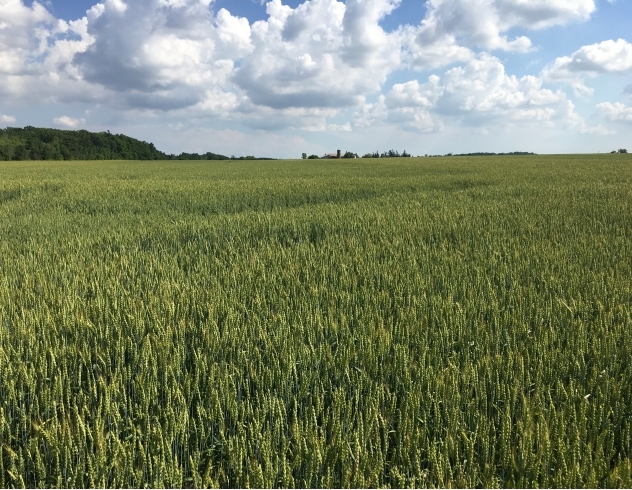News & Events

Spring is behind us, what’s next?
July 04, 2019

The long drawn out spring of 2019 is finally almost behind us. With a lot of planters sitting in the shed till the later half of June. I am always amazed at how many acres can get planted in a short period of time with today’s equipment. But there is still a fair bit of acres being unseeded with plans for an early planted wheat crop. Here are a couple things to think of for those acres going into the summer months.
If you use straw, plan which fields to remove the straw from. If at all possible, leave as much residue on fields with a history of beans – this reintroduces some Organic Matter back into depleted soil bank. With there being a shortage of straw, the prices have reflected this nicely. If you are a grower that typically doesn’t take the straw but are going to this year, plan for a fertilizer application to meet the removal of the grain and straw.
Soil sampling after wheat is a good habit to get into to. Right now is the perfect time to do this sampling –when your schedule isn’t as busy and the ground is ready to make the proper amendments. We can do field scale sampling or if you have yield data we can make zones, zeroing in on certain parts of the fields that are less profitable. This allows us to find the underlying cause of poorer yields and determine if it is economical to resolve the issue.
Once we get our soil test results back we can apply lime/manure/fertilizer to adjust levels and put fertility back into the ground.
If there are areas that have all the nutrients required, but are still producing poor yields, it could be an issue with the drainage. Placing tiles or improving field ditches to prevent ponding can help resolve this issue in future growing seasons.
Also, a great time to take care of problem weeds, such as sow-thistle, scentless chamomile, and wild carrot. Talk to one of our agronomists about what chemical fits your weed spectrum.
Lastly, if there is no clover or a poor stand, think of a cover crop that you can use to keep the weeds down and tie up nutrients. Pick the species that suits your operation best – either a species that will die off with frost or varieties that will over winter to keep erosion down, giving you a cover until spring time.
If you have any questions or need our help with any of these steps, talk to your agronomist today and we can work together to maximize your field’s productivity for future years.

This Crop Corner has been written by Jake Elgersma, Sales Agronomist at Clark Agri Service. Jake can be reached by email: jelgersma@clarkagriservice.com or by phone 289-659-5747